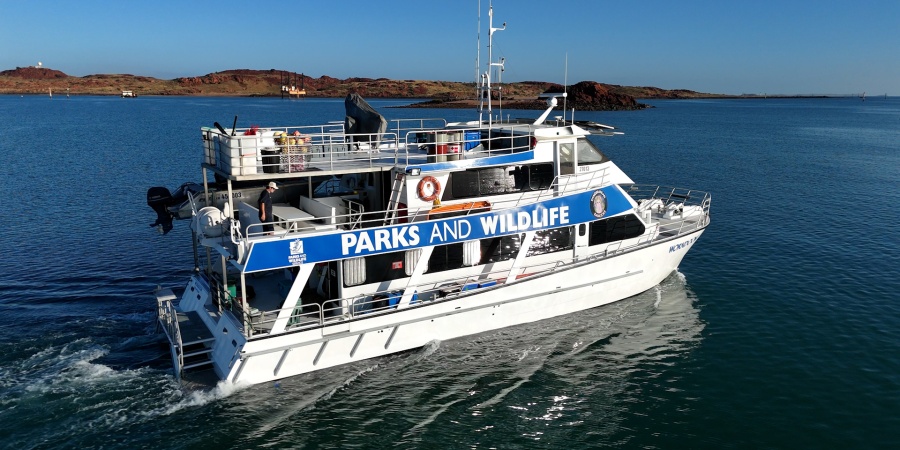
DBCA researchers are monitoring impacts of the marine heatwave in Montebello and Barrow Islands marine parks. Photo: DBCA
Staff from the Department of Biodiversity, Conservation and Attractions (DBCA) have returned from a 10-day monitoring trip in Montebello and Barrow Islands marine parks to assess the impacts of the marine heatwave on coral, fish and invertebrates.
The scientists will now spend the coming months consolidating the data they collected, analysing it, and comparing it to data from previous monitoring trips.
DBCA marine scientist and PhD candidate Tahlia Bassett said widespread coral bleaching was present across the region and observed at all the sites they visited.
“Bleaching was really variable between and within sites and across the different types of corals themselves. Some are already showing signs of partial mortality as a direct result,” Ms Bassett said.
“The data that we've collected from this trip as a part of our long-term monitoring within the reserves will act as a really important comparison from which we can examine the full scale of impacts of this event.
“Because corals can take quite a while to either die or recover following bleaching, we need to wait at least another few months, if not six to 12 months, to understand the full scale of impacts.”
Dr Jordan Goetze was monitoring fish activity in the area, as fish and coral are closely linked. Hundreds of hours of vision were filmed using diver operated video and baited remote underwater video cameras to monitor the number and species of fish present.
“It's a really great non-destructive method that we use that provides very important information on fish to monitor any changes in the future,” Dr Goetze said.
“We've got a team of people in the lab that will watch these hundreds of hours of fish videos that we've collected out at the Montebellos and they'll go through and identify all the fish, count all the fish, and we're also able to make length measurements of the fish without actually removing them from the water.”
Dr Inês Leal said it was important to also monitor invertebrates as they are the base of the food chain.
“Essentially, fish predate on invertebrates and then another animal will predate on the fish. So, without this community, you wouldn’t have food to sustain a balanced ecosystem,” Dr Leal said.
“We have found about 60 different species of macro-invertebrates during this latest monitoring, which is in terms of diversity, it is on par with what we found previously. However, in terms of the abundance of each individual species, there were differences."
Seawater in the Kimberley began to hit temperatures likely to cause significant heat stress and bleaching in corals in December 2024. Heat stress expanded into the Pilbara and Ningaloo regions in January 2025 and has remained abnormally high since.
Extensive coral bleaching has now been reported or observed by DBCA staff in the Kimberley, Ashmore Reef, Rowley Shoals, Montebello and Barrow Islands, Dampier Archipelago, inshore Pilbara, Exmouth Gulf and Ningaloo. Bleaching over such a wide extent has never previously been recorded in WA during a single event, and the intensity of bleaching at most locations is unprecedented.